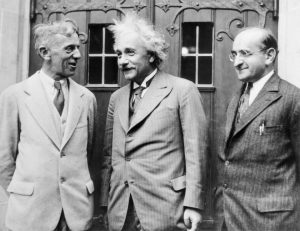Ethan Siegel in Forbes:
 Throughout the 20th century and into the 21st, America emerged at the pre-eminent place to be for physics research in the world. Of the 209 people to ever win the Nobel Prize in Physics, a whopping 93 of them claimed United States citizenship: triple that of Germany, the next-closest country. This was reflected not only at the highest levels of prestige and accomplishment in research, but also in education.
Throughout the 20th century and into the 21st, America emerged at the pre-eminent place to be for physics research in the world. Of the 209 people to ever win the Nobel Prize in Physics, a whopping 93 of them claimed United States citizenship: triple that of Germany, the next-closest country. This was reflected not only at the highest levels of prestige and accomplishment in research, but also in education.
The United States of America became the most desired place in the world to study physics at the highest levels. From fewer than 20 PhDs a year in 1900 to around 500 per year in the 1950s, we now award nearly 2,000 PhDs in physics every year. Moreover, since the 1990s, international students, representing some of the best and brightest talent the world has to offer, represent almost half of those degrees.
Yet, according to the American Physical Society, the past year has seen an alarming, unprecedented drop in the number of international applications to physics PhD programs in the United States. In an extremely large survey of 49 of the largest physics departments in the country, representing 41% of all enrolled physics graduate students in the United States, an overall decrease of almost 12% in the number of international applicants was observed from 2017 to 2018.
More here.
